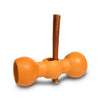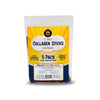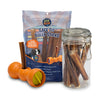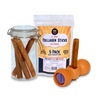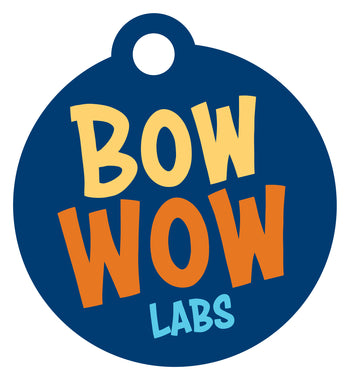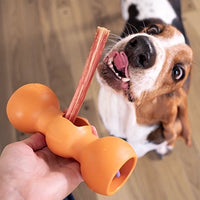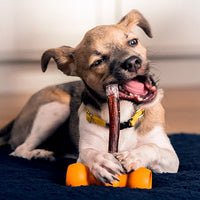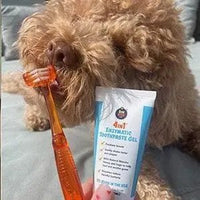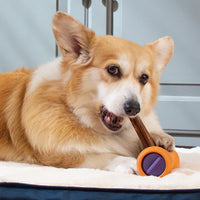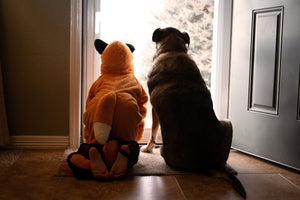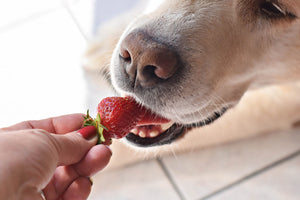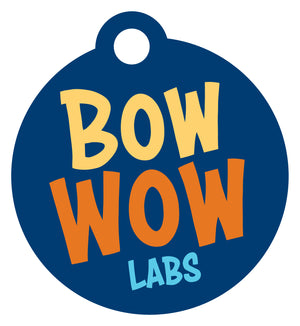Obesity is being called the new epidemic among dogs. In fact, according to the latest reporting, more than half of the dog population is considered overweight or obese.
Simply, dogs that consume too many treats and/or too much food will gain weight quickly, especially if they are not very active. What’s more, most owners of overweight dogs don’t believe their pup is carrying extra weight.
That’s a huge problem and here’s why: As few as five pounds above the ideal body weight can put your dog at risk for developing some serious medical conditions.
Overweight pups experience more stress on their internal organs, and there is greater strain to their joints and the rest of the musculoskeletal system.
According to Dr. Jacoba Nassar, a Conn.-based DVM, obesity in dogs is associated with cardiopulmonary disease, insulin resistance, osteoarthritis, renal disease, pancreatitis, neoplasia, as well as a shortened life span.
“Obesity is a chronic, inflammatory disease as fat cells are inflammatory,” explains Dr. Nassar. “Fat cells and adipose tissue are considered an endocrine organ, and an obese patient can develop several metabolic derangements (insulin resistance, inflammation, abnormal appetite control), which further exacerbate obesity by altering metabolic rate, lipid metabolism, and fat accumulation in abdominal organs.”
So, even if you think your dog’s weight isn’t a problem, now is a good time to re-evaluate their body and feeding habits to make sure. By learning how your dog’s body should look, you can quickly identify weight gain before it becomes a problem — now and in the future.
How to tell if your dog is overweight
Since most dog owners aren’t sure what their dog’s ideal weight should be, the most accurate way to gauge a healthy body weight is by using the body condition scoring model. This simple tool is a way to assess if your dog is above, at, or below their ideal weight is by using a few simple visual and physical cues.
The ideal body of a dog at a healthy weight will have ribs that are palpable without excess fat covering. Meaning, if you have to “push” through fat to feel your dog's ribs, they are not palpable. A visible tuck should be seen at the abdomen when viewed from the side. When viewed from above there should be a defined waist at the base of the ribcage. If your dog doesn’t meet this criteria, then chances are he could lose a few pounds. He will be happier and healthier for it.
Are you overfeeding?

Without meaning to, you may be overfeeding your dog.
If your pup is spayed or neutered, his or her food intake should be decreased by up to 25 percent from the “recommended daily intake” listed on the side of your food bag.
Additionally, feed per the amount suggested for your adult dog’s ideal healthy weight, not for their current weight. If you feed the recommended amount per your dog’s current weight, then you are essentially feeding them to be overweight. (Oops! See how easy it is to be giving too much!) Instead, feed to the desired healthy weight.
Helping your dog get to a healthy weight requires that you monitor everything that your dog ingests — from special treats and long-term chews to everything that’s in their food bowl. Those calories can add up fast and being mindful of them is important to ensuring your dog maintains a healthy weight!
How to help your dog maintain or achieve a healthy weight

1. Use a measuring cup: At mealtimes, measure out precisely the appropriate amount of food for your dog. “Eyeing it” or “giving a handful’ is a recipe for excess feeding.
2. Eliminate free-feeding: Rather than allow your dogs to graze throughout the day, try feeding smaller, frequent meals, especially if you have a finicky eater. Not only will it help their waistline but it will also help reduce the free radicals they are ingesting because of food oxidation
3. Exercise: While exercise alone is not enough to reduce a dog’s weight, a combination of decreasing caloric intake while increasing energy expenditure will help. For an obese dog, start out slow and increase exercise over time once he starts losing weight. Be sure to avoid exercise during the hottest times of the days, since obese and overweight dogs are more susceptible to heatstroke.
4. Be mindful of treats: If you are training your dog and give treats as a reward, remember that those calories count towards their daily allotment. For overweight dogs who can’t spare the extra calories from treats, a good alternative is to “treat” using their regular dog food. Just be sure to reduce the amount of food you feed come dinnertime by the amount you used for treating. Also, try swapping out carbohydrate-based treats, such as biscuits, with a higher protein treat or chew. Lastly, be careful not to associate food with love. Plying your dog with treats or table scraps to the point of obesity will only shorten the amount of time you will have him in your life.

5. Discuss with your vet: If you have tried all the above — without cheating — and your pup isn’t getting leaner, it may be beneficial to have your veterinarian run a full thyroid panel. Medium and large-breed dogs in middle age are particularly susceptible to hypothyroidism, a condition that impacts metabolism and can cause weight gain and make losing weight more difficult. A vet can determine if your dog is overweight due to a thyroid issue, and prescribe appropriate treatment if needed.
Beware of dog food targeted at obese dogs
If you’re thinking of changing up your dog’s food, make sure to read labels. Foods aimed at helping dogs shed pounds are often loaded with carbohydrates. A high-protein diet in line with a dog’s carnivore needs is the best nutrition for an ideal body weight.
After all, protein is the macronutrient that dogs use to build new muscle, repair injured tissue and rejuvenate organ cells. (Plus, I’ve never seen an overweight dog that is getting proper amounts of protein derived from animal meat.)
When losing weight, here’s what to expect from your dog
Losing weight safely is important and takes time, so be patient. When you begin a weight-loss routine for your dog, aim for weight loss of about one to two percent of their body weight per week. A 50-pound dog can safely lose about half to one pound per week, but no more than 4 pounds per month.
At first, you may notice your dog is begging more than usual. Many dogs will act ravenous even after they have met their caloric requirements for the day. This is normal. They are getting adjusted to their new way of eating.
Putting in the effort now to help your dog reach an ideal weight will result in real, life-changing benefits. With less weight, you can expect your dog to have more energy, move easier, and live a longer and healthier life.
Dr. Jacoba Nassar grew up in Nova Scotia, Canada, and graduated from the Atlantic Veterinary College in Prince Edward Island, Canada. Her special interests in veterinary medicine involve internal medicine cases, radiology, and applied neuroanatomy. Having had exposure to holistic practices, Dr. Nassar decided to pursue chiropractic training to enhance her approach to optimize quality of care. She received her VSMT (Veterinary Spinal Manipulative Therapy, also known as chiropractic) certification from the Healing Oasis Wellness Center; the only nationally accredited chiropractic school in the country. By integrating chiropractic techniques with traditional care, she has demonstrated and appreciated significant improvement in success rates of treatments and overall well-being of her patients.
Johnna Devereaux is a Clinical Pet Nutritionist and canine wellness expert. She is the Director of Nutrition and Wellness for Bow Wow Labs and sits on their Board of Advisors.
The points of view expressed above are those of our clinical nutritionist and supported by science, her education and experience. However, we recognize there may be different points of view or opinions on some aspect or even the premise of this article. Our goal at Bow Wow Labs is to provide the best, clearest, and most helpful information possible to help keep your dog happy, healthy and safe.
Related Resources
You Might Also Like:
Poop Talk: What Your Dog’s Poop is Telling You



